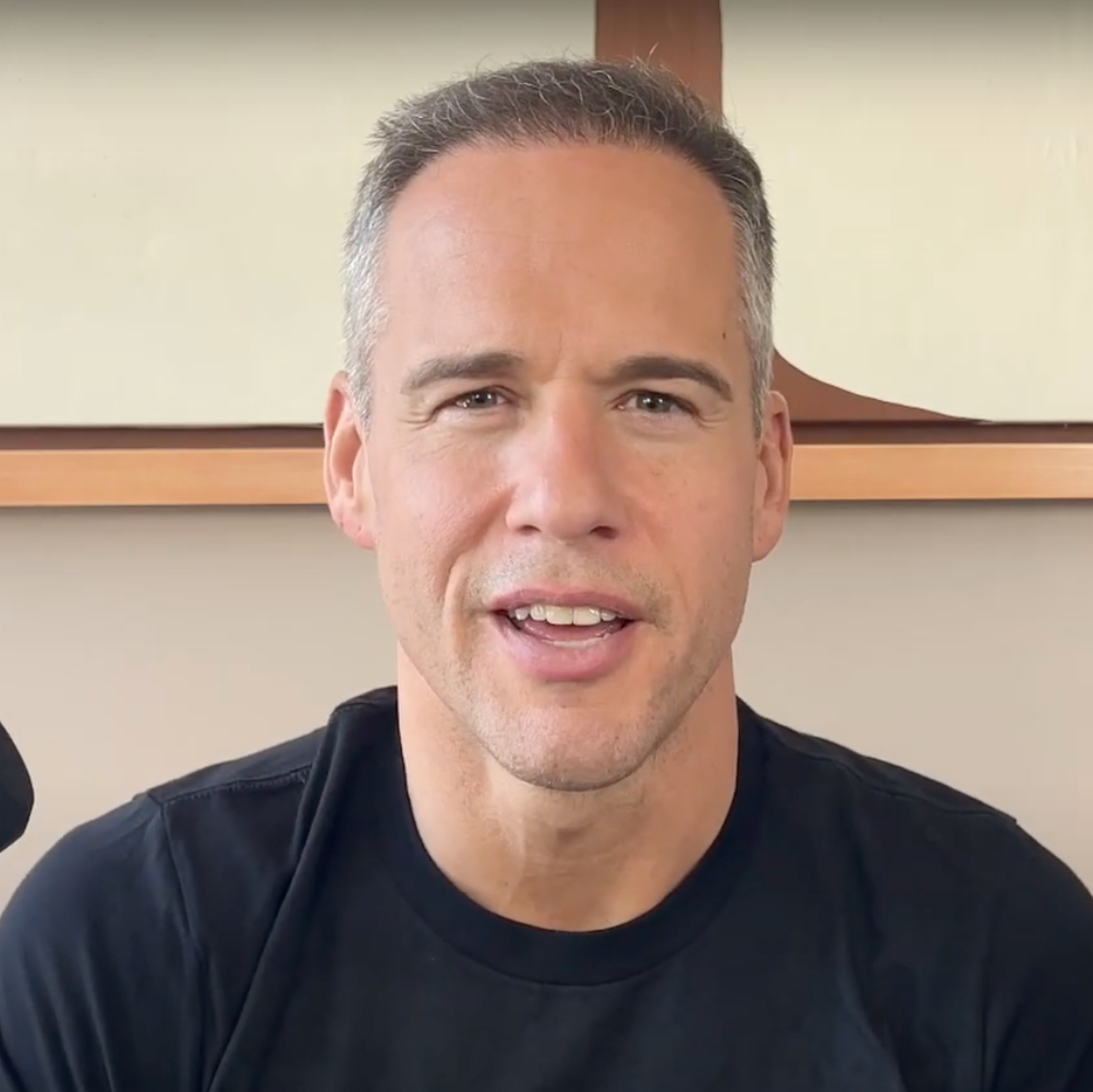Today we’re diving into one of the most powerful practices for improving both brain and body health: meditation. While many people try meditation and wonder whether anything is really happening, the science tells a clear story. Regular practice reshapes your stress response, sharpens attention, and creates lasting changes in the brain that support resilience and wellbeing. In this post, we’ll break down the neuroscience in plain language, compare the main styles of meditation, and walk you through practical, step-by-step strategies to build a sustainable practice. By the end, you’ll see why meditation is one of the simplest and most effective tools you can add to your daily routine.
Table of Contents
- Why I care about this
- How meditation changes the brain: the big three
- From brain changes to body changes: how meditation shifts the stress response
- Which type of meditation is best for you?
- How to get started: practical advice for beginners
- Building a sustainable meditation habit: a 4-week plan
- Troubleshooting common problems
- How to combine meditation with breathwork and movement
- Practical scripts and short practices you can use today
- Longer-term benefits: what changes look like after months and years
- Clinical cautions and when to seek help
- How to measure progress
- Frequently Asked Questions
- Final words from me
Why I care about this
I have worked with people who face anxiety, depression, attention problems, and the wear-and-tear of chronic stress. Over the years I’ve seen firsthand how simple mental skills change the way people relate to their thoughts and emotions. Meditation is one of those skills: it is both an immediate tool for calming and a long-term training program for the brain. When you practice consistently, you are not just relaxing—you are strengthening neural circuits and reconfiguring how your brain responds to stress, thought patterns, and distraction.
How meditation changes the brain: the big three

The human brain is remarkably plastic. That means it changes in response to repeated experiences, thoughts, and actions, much like muscles adapt to repeated exercise. When people talk about meditation “rewiring” the brain, they’re pointing to measurable changes in structure and function that occur with consistent practice. I’ll focus on three brain components where the evidence is clearest: the amygdala, the prefrontal cortex, and the default mode network.
1. The amygdala: turning down the brain’s alarm volume
The amygdala is often described as the brain’s alarm system. It detects potential threats and mobilizes stress responses. When it’s overactive, you can experience heightened anxiety, hypervigilance, or a tendency to get emotionally hijacked by perceived threats that are minor or imagined.
Research shows that meditation reduces both the size and activity of the amygdala over time. That doesn’t mean you stop feeling fear or that stressful things don’t matter anymore. Rather, your baseline reactivity decreases. In practical terms, that means you’re less likely to go into a full fight-or-flight mode over everyday stressors. You become better able to notice rising emotion and choose how to respond instead of being swept up by it.
For people with chronic stress or anxiety, this is powerful. It supports the ability to stay present during difficult moments, to de-escalate faster after an emotional spike, and to have fewer days when stress feels overwhelming.
2. The prefrontal cortex: strengthening your mental CEO
The prefrontal cortex is the area of the brain responsible for higher-order functions: planning, impulse control, attention, working memory, and the regulation of emotion. Think of it as the CEO of the brain. When it is strong, you can pause, reflect, and make choices that align with long-term goals rather than immediate impulses.
Meditation, particularly practices that train attention, has been shown to increase gray matter density in regions of the prefrontal cortex and to improve connectivity between the prefrontal cortex and other brain areas. That translates into improved attention control, better emotional regulation, and less impulsive reactivity. In daily life, this can look like pausing before snapping at a partner, choosing a healthier response to stress, or being able to sustain focus at work for longer stretches.
3. The default mode network: quieting the mind’s chatter
The default mode network, or DMN, is a set of brain regions that become active when we’re not focused on a task like when the mind wanders, daydreams, or engages in self-referential thinking. The DMN is responsible for replaying conversations in your head, worrying about how you’re perceived, and ruminating on past mistakes or future worries.
Excessive DMN activity correlates with rumination and negative thought loops where mental patterns that underlie depression and anxiety. Meditation, especially mindfulness and open monitoring practices, reduces DMN activity. That reduction correlates with decreased rumination and a stronger ability to stay present. People who meditate regularly often report they feel more engaged in life and less trapped by their internal monologue.
From brain changes to body changes: how meditation shifts the stress response
Neural changes are only part of the story. Meditation also produces measurable changes in physiological markers of stress and resilience. These changes are not just theoretical; they affect how you feel and function day to day.
Cortisol: lowering the baseline stress hormone
Cortisol is a hormone released by the adrenal glands in response to stress. Short bursts of cortisol can be adaptive, helping mobilize energy in acute danger, but chronically elevated cortisol contributes to anxiety, poor sleep, brain fog, and impaired memory. Studies show that meditation practices reduce baseline cortisol levels, which helps the brain and body recover from ongoing stress and reduces the steady-state of hyperarousal many people live with. Pairing meditation with the right foundational supplements such as Magnesium, Vitamin D3 & K2, Hydrogen, and Omega-3s can further support stress recovery and brain health.
Heart rate variability and vagal tone: improving flexibility
Heart rate variability (HRV) is a physiological marker of how well your nervous system can adapt to stress. Higher HRV indicates better capacity to shift between fight-or-flight and rest-and-digest states and is associated with greater resilience. Meditation increases HRV by boosting vagal nerve activity. The vagus nerve is a major component of the parasympathetic nervous system which is our internal calm-down pathway. When vagal tone increases, you recover from stress faster and your body returns to baseline more readily after emotional events.
Neurotransmitters: attention and motivation
Meditation also affects neurotransmitters. For instance, certain meditation practices increase dopamine in circuits related to attention and reward. That increase supports sustained focus, improves working memory, and enhances motivation for tasks that require concentration. Even brief, daily practice can produce measurable improvements in attention span and working memory capacity.
Which type of meditation is best for you?
Meditation is not a single practice. There are many techniques, each with different mechanisms and benefits. I find it helpful to categorize them into three main types that align with different goals: focused attention, open monitoring (mindfulness), and transcendental-style mantra meditation.
Focused attention meditation: build your attention muscle
What it is: This practice asks you to anchor your attention on a single object—your breath, a candle flame, counting inhales and exhales, or repeating a short phrase silently. When your mind wanders, you notice and gently return to the object.
What it does: Focused attention strengthens the prefrontal cortex and the neural networks involved in attention control and impulse regulation. It is especially useful if your primary goal is to improve focus, reduce distractibility, or increase cognitive performance.
How to practice (short script): Sit comfortably. Focus on the sensation of the breath at the nostrils or the rise and fall of the chest. Count silently on the exhale up to ten, then start again. When the mind wanders, simply note “wandering” and return to counting. Start with two minutes and build slowly.
Open monitoring (mindfulness) meditation: learn to observe without reactivity
What it is: This practice invites you to notice thoughts, feelings, bodily sensations, and sounds as they arise, without clinging to them or pushing them away. You do not focus on a single object; you simply monitor experience like a neutral observer.
What it does: Open monitoring calms the amygdala and reduces default mode network activity. It teaches you to recognize mental events as transient—thoughts passing through awareness rather than facts that require immediate action. This practice is particularly effective for emotional regulation and reducing overthinking and rumination. It also pairs beautifully with simple gratitude practices like training your brain to be happier with gratitude is another proven way to rewire thought patterns.
How to practice (short script): Bring attention to the body and breath. Notice a thought as it arises. Mentally label it “thinking” and allow it to pass like a cloud. If you notice a strong emotion, acknowledge it “sadness,” “anger” and return to the open field of awareness. Keep the attitude gentle and nonjudgmental.
Transcendental-style mantra meditation: deep relaxation
What it is: This method uses a personal mantra repeated silently in a relaxed, passive way. The approach is less about forceful focus and more about allowing the mantra to settle the mind naturally.
What it does: Transcendental-style practices promote deep relaxation and stress reduction. They can lower physiological arousal and are often taught through structured programs with certified instructors who give personalized mantras.
Important note: Traditional Transcendental Meditation (TM) programs typically involve individualized instruction and mantras. Other mantra-based practices can be done independently, but the classic TM approach usually includes a structured teaching process.
How to get started: practical advice for beginners

One of the most common barriers I hear from people who want to meditate is the expectation that it should feel profound from the first session. That sets people up for disappointment. Meditation is a skill. Skills require practice. So start small and be consistent.
Start small and be consistent
If you are brand new, begin with one to two minutes per day. Yes, that is enough to create a starting habit. After a week, increase to five minutes. Aim for consistency rather than duration. Fifteen minutes daily is more effective than an occasional hour-long session. Habit formation depends on regular repetition.
Use an anchor
An anchor is any repeated object of attention. Common anchors include:
- The breath (sensation at the nostrils or chest)
- A mantra or short phrase
- A steady sound (a metronome, a guided voice)
- Body sensations (scan through the body)
Choose one anchor and use it consistently for several weeks so your brain builds a stable association between the anchor and the calm, attentive state you’re cultivating.
Expect mind-wandering and treat it as the practice
When your mind wanders—and it will—the practice is in noticing it. The skill to cultivate is the ability to bring attention back gently and without judgment. Every time you notice your mind has wandered and you bring it back, you are strengthening attention and prefrontal control.
Guided meditations are useful
If focusing is difficult, use guided meditations. A voice guiding you through the practice helps orient attention and provides structure. Over time you may shift to more unguided practice as you become comfortable.
Building a sustainable meditation habit: a 4-week plan
Below is a practical program you can follow to build momentum. This plan is simple, progressive, and designed to minimize the common failure modes that derail beginners.
- Week 1: Two minutes daily
- Practice once each day for two minutes. Use breath as an anchor.
- Set a cue: after brushing your teeth in the morning or before bed. Link the new behavior to an existing routine.
- Week 2: Five minutes daily
- Increase to five minutes. Continue using breath. If distracted, label wandering and return to breath.
- Try a guided 5-minute meditation if you struggle to sit quietly.
- Week 3: Ten minutes, two practices
- Do two ten-minute sessions per day if possible: one focused attention and one open monitoring. Or one longer session daily.
- Experiment with mantra repetition for one session to feel the difference in relaxation.
- Week 4: Fifteen minutes daily
- Aim to do fifteen minutes daily. Rotate styles: focused attention several days, open monitoring other days, and one deep relaxation session per week.
- Journal briefly after each session noting what you observed and any differences in stress or focus.
After week 4, maintain at least 10–15 minutes daily. Add variety and adapt to your needs. Even short boosters—two minutes of breath-focused practice during a stressful workday—can be effective at shifting your nervous system.
Troubleshooting common problems
Here are practical solutions to difficulties most people face when learning to meditate.
“My mind won’t stop—meditation feels impossible”
That is normal. The goal of meditation is not to stop thinking but to change your relationship with thoughts. Start with short periods, use guided meditations, and make labeling your friend: when a thought arises, mentally note “thinking” and return to your anchor. Over time the gaps between distractions lengthen.
“I get bored or restless”
Restlessness often signals unmet physical needs: you might need movement, sleep, or a break. Try a movement-based mindfulness practice—walking meditation, mindful yoga—or schedule the session for a different time. Shorter sessions with higher frequency can also help you build tolerance for stillness gradually.
“I fall asleep when I meditate”
Falling asleep suggests your body is physically tired or your posture is too relaxed. Try meditating upright in a chair with feet on the floor or practice at a time when you are alert. Improving your overall sleep quality also plays a huge role in resilience. Here’s why sleep may just be the ultimate superpower. If sleepiness persists, consider whether your overall sleep hygiene needs attention.
“I had a strong emotional reaction during meditation”
Meditation sometimes surfaces difficult emotions. This is not uncommon and can be therapeutic when handled safely. If an intense reaction arises, ground yourself by returning to breath and bringing attention to the body. If the material feels overwhelming, pause and seek support from a therapist trained in mindfulness-based approaches.
How to combine meditation with breathwork and movement

Breathwork and movement-based mindfulness are excellent complements to seated meditation. Breathwork can create immediate shifts in arousal by engaging the parasympathetic nervous system. Movement-based practices like walking meditation, mindful yoga, and tai chi, make it possible for people who find sitting still hard to experience the benefits of mindfulness.
When you combine a short breathwork routine (two to five minutes) with a 10-minute seated practice, you get the immediate calming effect plus the longer-term neural training. Movement-based mindfulness is also a great transitional practice if you struggle to sit: start with five minutes of mindful walking before moving into a shorter seated practice.
Practical scripts and short practices you can use today
Below are short, ready-to-use meditations you can try. They are brief, evidence-based, and designed for real-world use.
Two-minute breath anchor
- Sit comfortably with your feet on the floor and hands relaxed.
- Close your eyes or soften your gaze.
- Take three slow, deep breaths to settle in.
- Bring attention to the breath at the nostrils. Feel each inhale and exhale.
- Count each exhale silently from 1 to 10. When you reach 10, start again at 1.
- If your mind wanders, note “wandering” and gently return to the breath.
Five-minute open monitoring body scan
- Lie down or sit comfortably.
- Close your eyes and take three deep breaths.
- Bring attention to the top of your head and slowly move downward, noticing sensations: tension, warmth, pressure.
- If a thought arises, note “thinking” and return to the body scan.
- Finish by taking three conscious breaths and opening your eyes.
Quick three-minute reset during stress
- Place one hand on your chest and one on your belly.
- Inhale for a four-count through the nose. Exhale for a six-count through the mouth.
- Repeat for three cycles, noticing the shift in your body and mind.
Longer-term benefits: what changes look like after months and years

Short-term benefits from meditation can be immediate: calmer breathing, a clearer mind after a single session. But the neural changes develop with repetition. After weeks to months of consistent practice, people commonly report:
- Lower baseline stress and fewer days of overwhelming anxiety
- Improved ability to focus and complete tasks without frequent distractions
- Less reactivity in interpersonal situations and better impulse control
- Reduced rumination and lower risk of depressive relapses in those with prior depression
- Improved sleep and recovery from daily stressors
The physiological markers—lower cortisol, higher HRV—also support better long-term health: improved immune function, better metabolic regulation, and potentially lower cardiovascular risk. These are not guaranteed, and lifestyle factors matter, but meditation contributes meaningfully to a resilient nervous system.
Clinical cautions and when to seek help
Meditation is safe for most people, but it is not a universal panacea. For some individuals, meditation can precipitate uncomfortable or intense psychological states, especially when there is a history of trauma, severe depression, psychosis, or dissociation. If meditation surfaces overwhelming emotions or memories, stop the practice and seek support from a qualified mental health professional trained in mindfulness-based interventions.
Additionally, meditation is not a substitute for evidence-based medical treatments when those are indicated. If you are taking medications, have a psychiatric diagnosis, or are under current clinical care, discuss adding meditation with your treatment team.
How to measure progress
It is tempting to judge practice by how “good” it feels. Instead, use measurable markers to track change:
- Consistency of practice: days per week and total minutes per week
- Subjective stress ratings: daily or weekly check-ins using a 0–10 scale
- Focus performance: time spent on task before distraction, or simple productivity markers
- Sleep quality and mood ratings
- Physiological markers if available: resting heart rate, HRV, or biomarkers like salivary cortisol. You can even take this further with personalized DNA insights to see how your unique genetics influence stress resilience and meditation outcomes.
Small, consistent gains are the most meaningful indicators of long-term change.
Frequently Asked Questions
How long before I see benefits from meditation?
You can experience immediate benefits such as reduced tension and clearer thinking after a single session. Measurable changes in attention and physiological markers often appear within weeks of consistent practice. Structural brain changes typically require months of regular meditation. The key is consistency; even short daily practice is effective.
Do I need to sit cross-legged on the floor to meditate?
No. The most important factors are comfort and alertness. You can sit in a chair with both feet on the floor, lie down if necessary (but be mindful of sleepiness), or use movement-based practices. Choose a posture that supports wakeful attention without strain.
Is guided meditation cheating?
Not at all. Guided meditations are a practical tool, especially for beginners. They provide structure, reduce the frustration of wandering minds, and can model the attitudes of curiosity and acceptance that underlie effective practice.
Can meditation worsen my mental health?
Rarely, but it can in some situations. If you have a history of trauma, psychosis, severe dissociation, or an active major depressive episode, meditation can sometimes bring up intense material. In those cases, work with a clinician trained in trauma-informed mindfulness or other therapeutic approaches. Always consult your provider if you have concerns.
How often should I meditate?
Daily practice is optimal. If that is not feasible, aim for at least several times per week. Even short daily sessions accumulate neural benefits more reliably than longer, infrequent sessions.
Can children and teens benefit from meditation?
Yes, adapted practices for young people—short, engaging, and age-appropriate—can improve attention, emotional regulation, and stress tolerance. Supervision and guidance tailored to developmental needs are important.
Final words from me
Meditation is both a practical tool and a long-term training program for your brain and nervous system. It is one of the simplest, most accessible ways to build resilience: lowering stress reactivity, improving focus, and calming rumination. The neuroscience supports what many people have found subjectively: consistent practice physically reshapes the brain in ways that help you respond rather than react.
If you want to explore further, start with the short practices in this article, set a small, daily goal, and observe what shifts over the coming weeks. And if you’re ready to create lasting change, you can try our Integrate protocol for even deeper transformation. If you have clinical concerns or a history of severe mental health conditions, consult a trained clinician before embarking on intensive meditation work.





